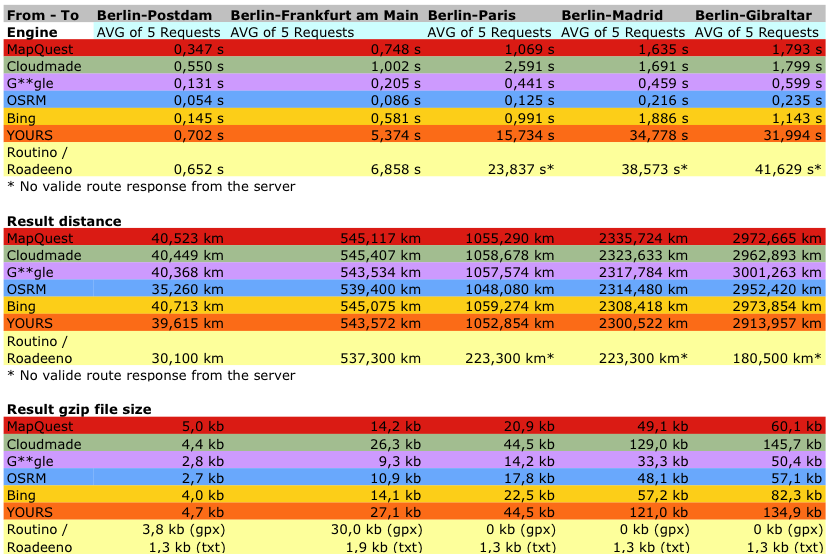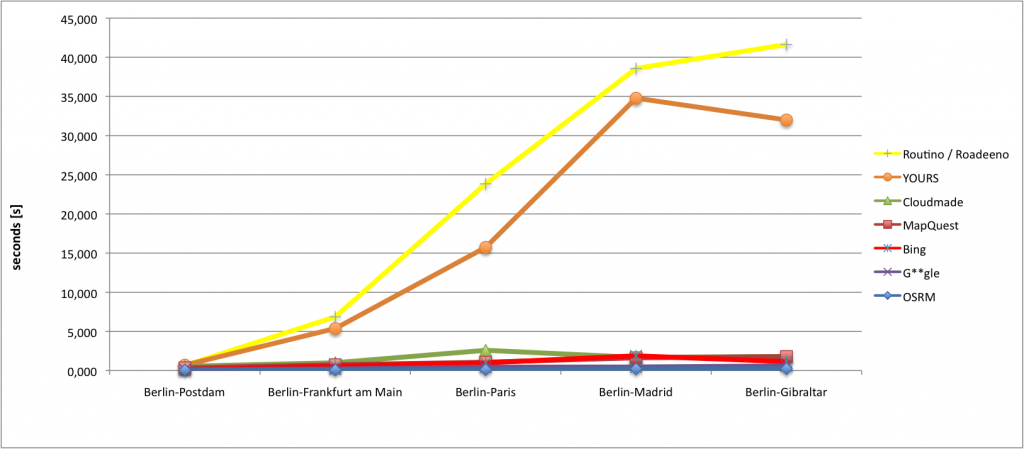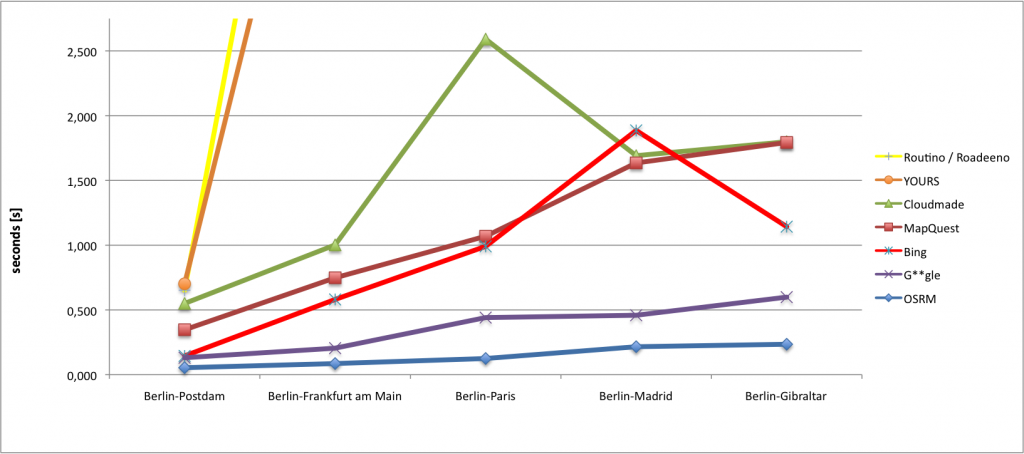Comparison of (OSM) routing-engines – Reloaded
Maybe some of you remember that I conducted a comparison analysis between three OpenStreetMap (OSM) routing engine APIs (CloudMade, MapQuest Open and OSRM) and G**gle Maps API last week. You can find the results in my blog post here. As I mentioned in the article, I wanted to try to do a second analysis with more routing engines.
Thus, I added Bing Maps and two OSM engines (YourNavigation/YOURS and Routino/Roadeeno) to the comparison. All services have a continental coverage with the exception of OSRM. The following table shows an overview of (1) the request-response time of the service, (2) the calculated distance for the test-route and (3) the file size of the service response:
As you can see in the following diagram does the OSM routing engine (OSRM) give the fastest results. A little bit strange is that the Routino/Roadeeno service returns no valid route responses for requests which are longer than 600 km.
The same diagram in a more detailed view:




